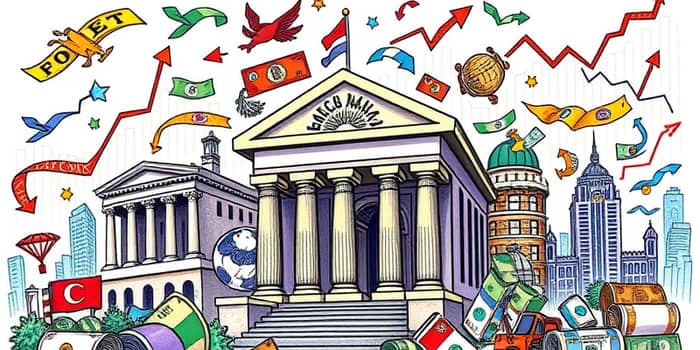
In an interconnected global economy, the foreign exchange market stands as one of the most dynamic arenas for investors and policymakers alike. The ebb and flow of currency values often hinge on decisions made in the halls of powerful central banks. In 2025, traders around the world watch every word, every data point, and every policy announcement for signs of movement. Understanding this landscape can empower investors to navigate volatility and seize opportunities.
Central banks hold an outsized role in shaping currency valuations. Through interest rate changes, quantitative easing programs, and direct market interventions, they help manage inflation, control the money supply, and steer economies toward stability. The mere hint of a policy shift can trigger sharp movements in exchange rates, impacting trade balances, capital flows, and portfolio returns.
At its core, forex is a reflection of confidence. When a central bank signals future tightening or easing, investors adjust their positions based on anticipated returns and risk. This interplay between communication and action underscores why monitoring policy guidance is essential for anyone involved in currency trading.
Interest rate decisions are perhaps the most direct tool. When a central bank raises borrowing costs, it attracts foreign capital seeking higher yields. The resulting demand for that currency can send its value surging. Conversely, rate cuts often lead to depreciation as investors pursue better returns elsewhere.
Quantitative easing (QE) serves as a powerful, albeit less surgical, instrument. By purchasing government and private-sector bonds, central banks inject liquidity into the system. While this stimulus can spur economic growth, it also enlarges the monetary base and can weaken the currency over time.
Inflation targeting remains a cornerstone of modern policy frameworks. Most major banks aim for around 2% annual inflation to preserve purchasing power without stifling growth. When prices climb above expectations, a central bank may tighten policy to cool the economy—a development that usually bolsters the currency. Yet if inflation remains stubbornly low, easing measures can drag the currency downward.
As 2025 unfolds, interest rate divergence has emerged as a defining theme. Some central banks, wary of slowing growth, have opted to cut rates, while others maintain or raise them to tame inflation. These differing paths create opportunities—and risks—for forex traders.
Specifically, the U.S. dollar has shown strength despite global headwinds, underpinned by market confidence in the Fed’s long-term vigilance. In contrast, the euro faces potential weakness from geopolitical tensions and trade uncertainty. Investors engaged in carry trades continue to capitalize on these divergences, borrowing in low-yield currencies like the euro to invest in higher-yielding assets linked to the dollar.
Beyond core monetary policies, a range of external shocks can send currencies on unpredictable trajectories. Geopolitical events—such as trade disputes or regional conflicts—can prompt sudden risk-off moves. Traders often flock to safe-haven assets like the USD or CHF during periods of uncertainty.
Unexpected demand shocks, driven by shifts in consumer sentiment or abrupt changes in lending standards, may force central banks to pivot quickly. Similarly, inflation surprises can produce counterintuitive results: if inflation overshoots expectations, and markets believe the central bank will respond with rate hikes, the currency may actually appreciate.
Navigating foreign exchange markets requires vigilance, adaptability, and a keen understanding of policy dynamics. Here are key strategies to stay ahead:
Ultimately, success in the forex market hinges on the ability to interpret signals, anticipate policy shifts, and position capital accordingly. By combining rigorous analysis with disciplined risk management, investors can transform central bank-induced volatility into trading opportunities.
In a world where economic conditions can change overnight, staying informed and agile is paramount. As 2025’s central bank landscape continues to evolve, those who master the art of reading policy guidance will gain the competitive edge needed to thrive amidst currency market fluctuations.
References













